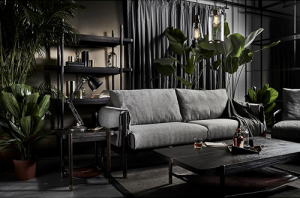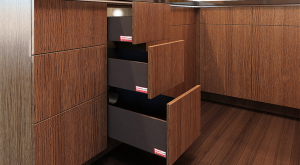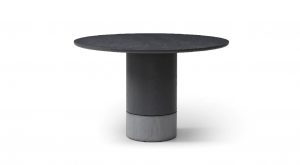Featured Post
The Ultimate Furniture Maintenance and Care Guide
Introduction
Furniture is more than just functional; it's an investment in your home's comfort and style. Proper care can extend its life and keep it looking beautiful for years. This guide will walk you through essential maintenance tips for various types of furniture, helping you protect your pieces and maintain their value.
General Furniture Care Tips
Before diving into specific materials, here are some universal tips that apply to most furniture:
- Dust Regularly: Use a soft, lint-free cloth to dust furniture at least once a week. This prevents buildup that can scratch surfaces.
- Avoid Direct Sunlight: Prolonged exposure to sunlight can fade and damage furniture. Use curtains or blinds to protect your pieces.
- Use Coasters and Mats: Protect surfaces from heat, moisture, and scratches by using coasters for drinks and mats for hot dishes.
- Rotate Cushions: For upholstered furniture, rotate and fluff cushions regularly to ensure even wear.
- Keep Away from Heat Sources: Furniture can warp or crack if placed too close to radiators, fireplaces, or heating vents.
These tips are straightforward but essential for maintaining any type of furniture.

Caring for Wood Furniture
Wood furniture adds warmth and elegance to any space, but it requires specific care to maintain its beauty.
- Cleaning: Use a damp (not wet) cloth to wipe down wood surfaces. Avoid harsh chemicals; instead, opt for mild soap if needed. Dry immediately with a soft cloth.
- Polishing: Apply a quality furniture polish every few months to protect the finish and add shine. Beeswax-based polishes are excellent for natural wood, as recommended by the University of X Extension Service.
- Avoid Water Rings: If you spot a water ring, mix equal parts baking soda and toothpaste (non-gel), rub gently with a soft cloth, then wipe clean and polish.
- Handle with Care: When moving wood furniture, lift it instead of dragging to prevent scratches on floors and damage to legs.
Personal Insight: I once neglected to use coasters on my wooden coffee table, and over time, it developed unsightly water rings. After some research, I found that a mixture of baking soda and toothpaste worked wonders in removing them. Now, I'm diligent about using coasters and regularly polishing my wood furniture to keep it looking its best.
Special Care for Wooden Tables
Tables are often the centerpiece of a room and see a lot of use. Here are some additional tips:
- Use Tablecloths or Placemats: These protect the surface from scratches and spills.
- Clean Spills Immediately: Especially important for dining tables to prevent staining.
- Check for Loose Joints: Periodically inspect and tighten any loose screws or bolts to maintain stability.

Caring for Upholstered Furniture
Upholstered pieces like sofas and chairs require regular attention to keep them clean and comfortable.
- Vacuum Regularly: Use the upholstery attachment to remove dust and debris from crevices and surfaces. The Textile Institute suggests vacuuming weekly.
- Spot Clean Stains: For spills, blot (don't rub) with a clean cloth. Use a mild detergent solution for tougher stains, testing first on an inconspicuous area.
- Rotate Cushions: As mentioned earlier, this helps with even wear.
- Professional Cleaning: Consider professional cleaning every 12-18 months, especially for heavily used pieces.
Personal Insight: I learned the hard way that rubbing a stain on upholstery can make it worse. When I spilled coffee on my sofa, I frantically rubbed it, which only spread the stain. Now, I know to blot gently and use a proper cleaner.

Caring for Metal Furniture
Metal furniture can be prone to rust and corrosion if not properly maintained.
- Clean with Mild Soap: Use a soft cloth and mild soap solution to clean metal surfaces. Avoid abrasive cleaners that can scratch the finish.
- Dry Thoroughly: Moisture can lead to rust, so make sure to dry metal furniture completely after cleaning.
- Apply Wax: For outdoor metal furniture, apply a coat of automotive wax to protect against the elements.
- Check for Rust: If you spot rust, use a wire brush to remove it, then apply a rust-inhibiting primer and paint.

Caring for Glass Furniture
Glass tables and shelves add a modern touch but can show fingerprints and smudges easily.
- Use Glass Cleaner: Spray glass cleaner on a soft cloth (not directly on the glass) and wipe in a circular motion.
- Avoid Abrasives: Don't use abrasive sponges or cleaners that can scratch the glass.
- Support Properly: Ensure that glass tabletops are supported evenly to prevent cracking.
- Use Coasters: Even on glass, coasters can prevent scratches from rough-bottomed items.

Seasonal Furniture Care
Different seasons can affect your furniture in various ways.
- Winter: Low humidity can cause wood to crack. Use a humidifier to maintain indoor humidity levels.
- Summer: High humidity can lead to mold on upholstery. Ensure good ventilation and consider using a dehumidifier.
- Spring/Fall: These are good times for deep cleaning and maintenance, like polishing wood or professional upholstery cleaning.

Simple DIY Furniture Repairs
For minor issues, you can often fix them yourself.
- Scratches on Wood: Use a furniture marker or crayon that matches the wood color to fill in scratches.
- Loose Joints: Tighten screws or apply wood glue to stabilize wobbly furniture.
- Torn Upholstery: For small tears, use a fabric glue or patch kit designed for upholstery.
Personal Insight: I had a favorite armchair with a small tear in the fabric. Instead of reupholstering the whole thing, I used a fabric patch kit, and it blended in nicely, saving me a lot of money.

When to Seek Professional Help
While many maintenance tasks can be done at home, some situations require expert attention.
- Structural Damage: If furniture is unstable or has broken parts, a professional can ensure it's repaired safely.
- Deep Stains or Odors: For upholstery, professionals have tools and cleaners that can tackle tough stains and smells.
- Antique or Valuable Pieces: For high-value furniture, it's best to consult a specialist to preserve its worth.
Conclusion
Taking care of your furniture doesn't have to be complicated. With regular cleaning, preventive measures, and timely repairs, you can keep your pieces looking great and functioning well for years to come. Remember, a little effort goes a long way in preserving the beauty and value of your furniture.









